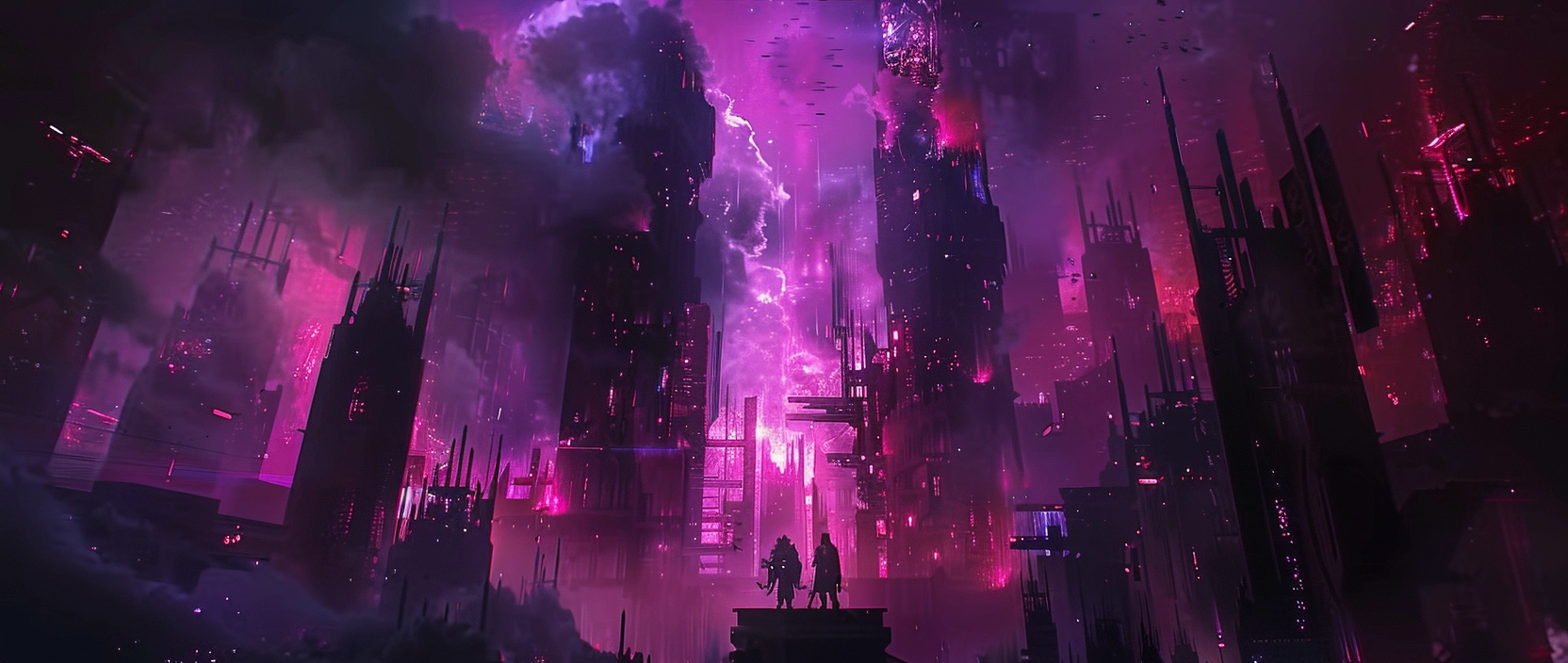Tevera is a large-scale next-generation Web3 ecosystem built on the Teva Protocol and designed to unite games, guilds, digital assets, and on-chain economies within a single environment. Unlike typical blockchain projects, Tevera aims to create a full-fledged gaming metaverse where value emerges through social interaction, asset ownership, and cross-game progression. With its own L3 chain, flexible architecture, and extensive developer tools, the ecosystem enables the creation of decentralized communities, new gaming genres, and unique economic models. In this article, we will explore the project’s foundation, technological structure, gameplay components, digital economy, and growth potential in detail.
Contents
- The Concept of Tevera and the Structure of the Web3 Ecosystem
- Blockchain Architecture and Tevera’s Technological Elements
- Gaming Ecosystem, Guilds, and In-Game Possibilities
- Economic Model and Core Digital Assets
- Development Prospects, Risks, and Long-Term Potential
- Conclusion

1. The Concept of Tevera and the Structure of the Web3 Ecosystem
Tevera is a multi-layered gaming environment that brings together players, development teams, and content creators under a unified protocol. At the core of the ecosystem lies the Teva Protocol — a universal infrastructure that enables the creation of tokenized communities, management of digital assets, deployment of games, and development of complete on-chain economies. This transforms the platform into a flexible framework for building game worlds where users interact not only with content but also with each other, forming a unique social structure.
The ecosystem is built around three key pillars: gaming, social interaction, and distributed economics. Rather than focusing on a single product, Tevera provides the foundation for dozens of games that can utilize shared assets, profiles, and progression. This makes the system scalable and resilient while increasing the value of NFT assets, as they can be used across multiple game environments. As a result, players receive long-term incentives to develop their profiles and collections.
Beyond gameplay, Tevera emphasizes the development of community tools and social interaction mechanics. The platform enables new forms of collective progression: inter-guild competitions, cross-game events, team-based challenges, and user-driven tournaments. It also serves as a launchpad for fan-made content and social experiences. This approach creates an ecosystem in which players are not just participants but contributors to its evolution.
2. Blockchain Architecture and Tevera’s Technological Elements
Tevera’s technical architecture is designed for stability, high performance, and reliable integration with on-chain mechanics. Its foundation is the Teva Chain — a proprietary L3 blockchain built on zkSync/zkStack. This provides fast transaction confirmations, minimal fees, and efficient performance under intensive gaming workloads. Such infrastructure allows developers to create projects that require real-time synchronization of game data.
Core technological components of Tevera:
| Component | Description | Role in the Ecosystem |
|---|---|---|
| Teva Protocol | Open framework for communities, games, and on-chain economies | Enables the creation of guilds and digital worlds |
| Teva Chain (L3) | High-speed zkStack-based gaming chain | Provides transactions, asset storage, and scalability |
| Teva Core | Module for Web3 functions and user data | Manages assets and player profiles |
| Teva Market | Official NFT marketplace | Allows trading of game items and assets |
| Teva SDK | Developer toolkit | Integrates on-chain functionality into games |
Tevera’s infrastructure is capable of handling massive gaming loads — a critical requirement for MMO projects and games with active economies. zk-technology ensures security, privacy, and high-speed data processing. Thanks to architectural flexibility, developers can introduce new features without making disruptive changes to the network core. This makes Tevera a dynamic tech platform ready to support the growth of numerous gaming worlds.
Cross-game scenarios enabled by Teva Chain allow the creation of a unified player progression transferable across different titles. This unlocks new possibilities for hybrid genres and innovative socio-economic models. As a result, the ecosystem gains a high degree of adaptability and becomes competitive within the evolving Web3 gaming landscape.
3. Gaming Ecosystem, Guilds, and In-Game Possibilities
Tevera’s gaming ecosystem grows through a modular approach, combining in-house games with projects developed by external studios. One of the flagship products is “Teva Run,” which uses NFT characters called Guardians, showcasing Tevera’s approach to gameplay and asset integration. In the future, the platform aims to expand with PvP arenas, RPG modes, strategy games, and social simulators, all linked by shared assets and progression systems.
Guilds are a central feature of Tevera, forming the foundation of its social structure. Each guild operates as an on-chain organization with its own economy, treasury, roles, reputation system, and governance mechanics. Players can join guilds, participate in collaborative missions, develop roles, and access unique in-game events. In some cases, guilds can even create internal mini-games or independent economic models.
The flexibility of the guild system allows players to form stable sub-communities that develop their own playstyles — whether combat-focused, economic, social, or leadership-oriented. This creates a multi-layered progression model where social engagement becomes just as important as gameplay skills. The reputation system adds further depth, granting access to exclusive content and privileges, making guild participation a significant part of player advancement.
Cross-game utility of assets boosts their long-term value and motivates players to expand their collections. Developers are exploring dynamic assets that evolve based on user activity. These features collectively position Tevera as one of the most promising Web3 gaming ecosystems.

4. Economic Model and Core Digital Assets
Tevera’s economy is founded on decentralization, asset utility, and long-term value creation. Players take part in managing and expanding digital ecosystems while maintaining full control over their on-chain assets. The platform’s economic model supports diverse playstyles and offers meaningful progression paths.
Main elements of the economic system include:
- Guild tokens: currencies that govern internal community economies.
- NFT characters: Guardians and other avatars used across games.
- On-chain inventory: accessories, resources, and collectible items.
- Teva Market: marketplace for buying and selling assets.
- DEX module: enables peer-to-peer token exchange.
- Reputation system: determines player status and benefits.
Asset ownership makes progression meaningful, as each item has practical in-game use and market value. Prices are shaped by demand, rarity, and community engagement, creating a dynamic, player-driven economy. Because the system relies on activity rather than token inflation, it remains stable even as the ecosystem grows.
Unlike many P2E projects, Tevera focuses on utility rather than raw token emission. This prevents inflation and supports sustainable asset value. The ability to use items across multiple games significantly increases their longevity and importance, contributing to a self-sustaining economic environment.
5. Development Prospects, Risks, and Long-Term Potential
Tevera has strong long-term potential due to its advanced blockchain architecture, social framework, and versatile asset system. The platform aims to become a major hub for Web3 gaming, uniting diverse communities, developers, and guild structures. Its proprietary L3 chain and extensive development tools make it an attractive choice for studios looking to build high-performance Web3 games.
However, the project also faces key challenges. The largest risk lies in maintaining player engagement over time. Tevera must consistently release new content, expand gameplay features, and ensure active guild participation. Competition in the Web3 gaming market continues to grow, pushing the platform to innovate continuously.
Despite these challenges, Tevera shows confident progress. The team is enhancing the Teva Protocol, forming new partnerships, expanding toolkits, and developing additional games. If the ecosystem continues to evolve at the current pace, it may attract major guilds, third-party studios, and a broad user base, ultimately becoming a fully fledged gaming metaverse.
Over the long term, Tevera’s success will depend on the stability of its economic model and its ability to balance gameplay depth with economic sustainability. Even now, the platform represents one of the most comprehensive and ambitious solutions in the Web3 gaming sector.
6. Conclusion
Tevera is an ambitious Web3 ecosystem that merges gaming, guilds, and digital economies into a unified infrastructure. The platform offers powerful tools for developers, rich gameplay mechanics, and digital asset ownership that extends far beyond a single product.
It creates an environment where player progression becomes digital property, and community participation serves as a meaningful extension of gameplay. With cross-game asset compatibility and a proprietary L3 chain, Tevera is already setting new standards for Web3 gaming.
If the project continues to expand its tools, strengthen its economic foundations, and deliver high-quality content, it has the potential to secure a leading position among next-generation Web3 gaming platforms. Tevera is building the foundation for the future of decentralized, socially-driven, and asset-based gaming.




